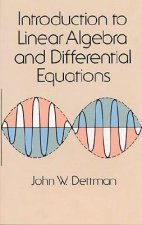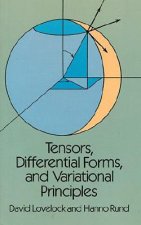
Code: 01716126
Extension and Interpolation of Linear Operators and Matrix Functions
by I. Gohberg
The classicallossless inverse scattering (LIS) problem of network theory is to find all possible representations of a given Schur function s(z) (i. e. , a function which is analytic and contractive in the open unit disc D) in term ... more
- Language:
 English
English - Binding: Paperback
- Number of pages: 305
Publisher: Birkhauser Verlag AG, 1990
- More about this

59.08 €

Low in stock at our supplier
Shipping in 10 - 14 days
Potřebujete více kusů?Máte-li zájem o více kusů, prověřte, prosím, nejprve dostupnost titulu na naši zákaznické podpoře.
Add to wishlist
You might also like
-

Neolithic to Saxon Social and Environmental Change at Mount Farm, Berinsfield, Dorchester-on-Thames, Oxfordshire
29.84 € -4 % -

Essential Staple Foods for a Good Diet: Improve Your Health with the Nutrients Your Body Really Needs, Proteins, Carbohydrates, Fats
9.13 € -1 % -

Hanging In
25.07 € -19 % -

When Someone You Love Abuses Drugs or Alcohol: Daily Encouragement
8.31 € -19 % -

Hubert Harrison Reader
35.02 € -

Exalting Jesus in Jonah, Micah, Nahum, Habakkuk
21.11 € -4 % -

Fictions of Mass Democracy in Nineteenth-Century America
134.31 € -

Celebrating the Great Mother
21.11 € -4 % -

Cancer in Adolescents and Young Adults
292.79 € -

Computational Aspects of an Order-Sorted Logic with Term Declarations
53.90 € -

Bhagavata Purana
44.86 € -

Eldirs Tre Doettrar
53.49 € -6 % -

Zora, der kleine Drache
16.23 € -

Contes et historiettes a l'usage des jeunes enfants Qui commencent a savoir lire
46.08 €
Give this book as a present today
- Order book and choose Gift Order.
- We will send you book gift voucher at once. You can give it out to anyone.
- Book will be send to donee, nothing more to care about.
More about Extension and Interpolation of Linear Operators and Matrix Functions
You get 147 loyalty points
 Book synopsis
Book synopsis
The classicallossless inverse scattering (LIS) problem of network theory is to find all possible representations of a given Schur function s(z) (i. e. , a function which is analytic and contractive in the open unit disc D) in terms of an appropriately restricted class of linear fractional transformations. These linear fractional transformations corre spond to lossless, causal, time-invariant two port networks and from this point of view, s(z) may be interpreted as the input transfer function of such a network with a suitable load. More precisely, the sought for representation is of the form s(Z) = -{ -A(Z)SL(Z) + B(z)}{ -C(Z)SL(Z) + D(z)} -1 , (1. 1) where "the load" SL(Z) is again a Schur function and _ [A(Z) B(Z)] 0( ) (1. 2) Z - C(z) D(z) is a 2 x 2 J inner function with respect to the signature matrix This means that 0 is meromorphic in D and 0(z) J0(z) ::5 J (1. 3) for every point zED at which 0 is analytic with equality at almost every point on the boundary Izi = 1. A more general formulation starts with an admissible matrix valued function X(z) = [a(z) b(z)] which is one with entries a(z) and b(z) which are analytic and bounded in D and in addition are subject to the constraint that, for every n, the n x n matrix with ij entry equal to X(Zi)J X(Zj ) i,j=l, . . .
 Book details
Book details
Book category Books in English Mathematics & science Mathematics Calculus & mathematical analysis
59.08 €
- Full title: Extension and Interpolation of Linear Operators and Matrix Functions
- Author: I. Gohberg
- Language:
 English
English - Binding: Paperback
- Number of pages: 305
- EAN: 9783764325305
- ISBN: 3764325305
- ID: 01716126
- Publisher: Birkhauser Verlag AG
- Weight: 760 g
- Dimensions: 229 × 152 × 18 mm
- Date of publishing: 21. September 1990
Trending among others
-

Infinite Powers: How Calculus Reveals the Secrets of the Universe
14.10 € -27 % -

Cartoon Guide to Calculus
16.44 € -28 % -

Calculus
85.88 € -

Understanding Analysis
51.36 € -

Precalculus: Mathematics for Calculus, International Metric Edition
102.33 € -

Essential Calculus
102.33 € -

Introduction to Linear Algebra and Differential Equations
13.80 € -24 % -

Principles of Mathematical Analysis
232.68 € -

Calculus Story
15.42 € -20 % -

Real and Complex Analysis
247.91 € -

Handbook of Differential Equations
146.90 € -

A Course in Multivariable Calculus and Analysis
69.43 € -

Fourier Series
9.13 € -19 % -

Schaum's Outline of Advanced Calculus, Third Edition
16.23 € -30 % -

Calculus
58.67 € -

Calculus For Dummies, 2nd Edition
16.44 € -32 % -

Calculus Made Easy
18.67 € -22 % -

Schaum's Outline of Partial Differential Equations
23.85 € -20 % -

Schaum's 3,000 Solved Problems in Calculus
44.05 € -20 % -

Schaums Outline of Tensor Calculus
24.36 € -13 % -

Schaum's Outline of Beginning Calculus, Third Edition
28.42 € -20 % -
![Elements of the Theory of Functions and Functional Analysis [Two Volumes in One] Elements of the Theory of Functions and Functional Analysis [Two Volumes in One]](https://media.libris.to/jacket/08800728t.jpg)
Elements of the Theory of Functions and Functional Analysis [Two Volumes in One]
13.49 € -

Schaum's Outline of Lagrangian Dynamics
26.79 € -21 % -

Fourier Transforms
19.38 € -20 % -

Calculus of Variations
12.38 € -23 % -

Measurement
23.95 € -11 % -

Calculus: Early Transcendentals, Metric Edition
103.04 € -

Schaum's Outline of Vector Analysis, 2ed
17.55 € -27 % -

Calculus: A Complete Introduction
17.55 € -18 % -

Advanced Calculus (Revised Edition)
31.97 € -

Stochastic Calculus for Finance I
67.20 € -13 % -

Visual Introduction to Differential Forms and Calculus on Manifolds
73.29 € -13 % -

Introductory Real Analysis
23.75 € -23 % -

Differential Equations and Linear Algebra
76.03 € -5 % -

Div, Grad, Curl, and All That
60.80 € -

Schaum's Outline of Complex Variables, 2ed
30.75 € -14 % -

Complex Analysis
85.17 € -

Prime Suspects
29.53 € -

Advanced Calculus of Several Variables
23.54 € -23 % -

Essential Calculus: Early Transcendentals
122.02 € -

Tensors, Differential Forms and Variational Principles
17.05 € -29 % -

Complex Variables
19.38 € -20 % -

TI-83 Plus Graphing Calculator for Dummies
15.32 € -24 % -

Measure Theory
196.34 € -2 % -

Introduction to Real Analysis 4e
255.32 € -

Introduction to Stochastic Differential Equations
65.17 € -

Finite Element Methods
210.35 € -

Complex Analysis and Algebraic Geometry
49.74 € -

Theory of Linear Operators in Hilbert Space
20.50 € -10 %
Collection points Bratislava a 2642 dalších
Copyright ©2008-24 najlacnejsie-knihy.sk All rights reservedPrivacyCookies


 15549 collection points
15549 collection points Delivery 2.99 €
Delivery 2.99 € 02/210 210 99 (8-15.30h)
02/210 210 99 (8-15.30h)